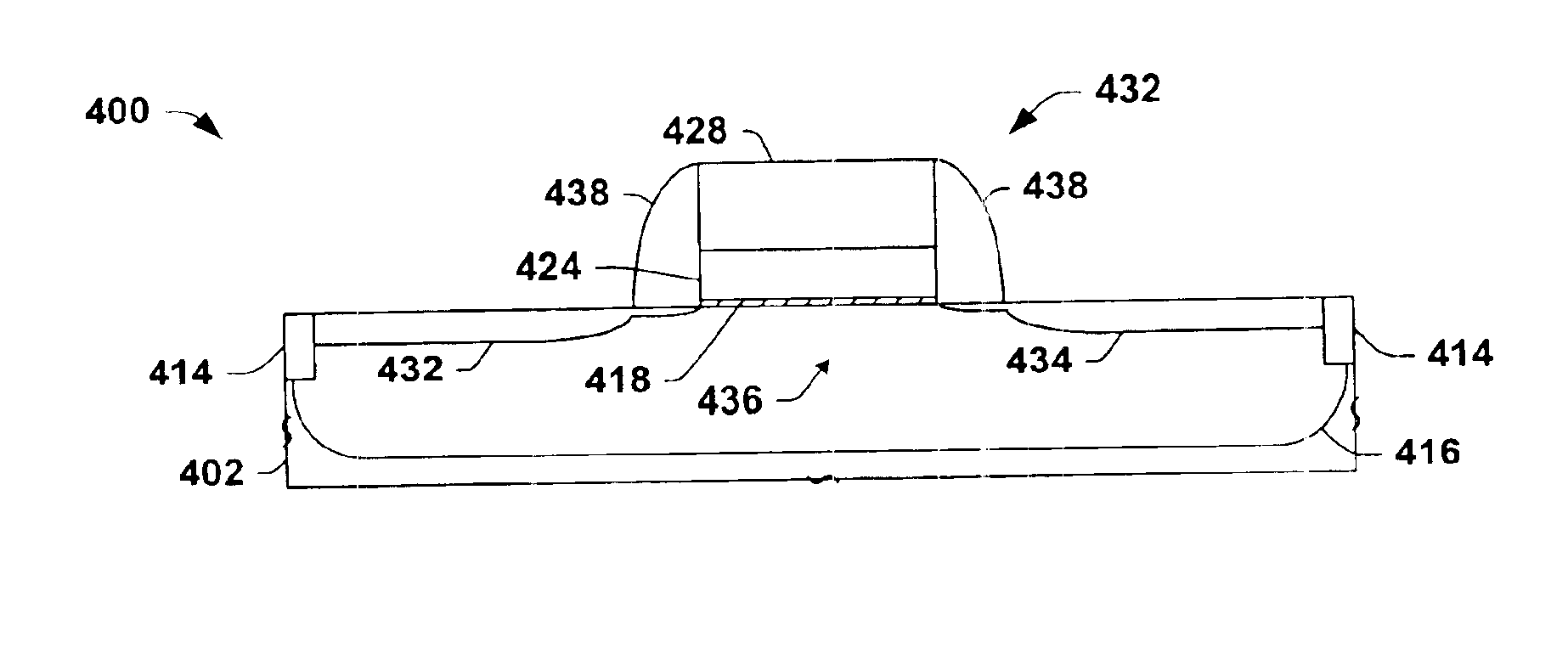High temperature interface layer growth for high-k gate dielectric
a high-temperature, gate dielectric technology, applied in the direction of superimposed coating process, capacitor, coating, etc., can solve the problems of increased cost, increased cost, increased cost, etc., and achieve the effect of facilitating the production of a higher quality layer and high quality
- Summary
- Abstract
- Description
- Claims
- Application Information
AI Technical Summary
Problems solved by technology
Method used
Image
Examples
Embodiment Construction
"d_n">[0021]FIG. 2 is a flow diagram illustrating an exemplary method in accordance with the present invention;
[0022]FIG. 3 is a graph charting an interface oxide layer growth rate as a function of the partial pressure of a reducing agent in a gas phase; and
[0023]FIGS. 4-9 are partial side elevation views in section illustrating an exemplary semiconductor device being processed at various stages of manufacturing in accordance with various aspects of the invention.
DETAILED DESCRIPTION OF THE INVENTION
[0024]One or more implementations of the present invention will now be described with reference to the attached drawings, wherein like reference numerals are used to refer to like elements throughout. The invention relates to formation of ultra thin interface oxides suitable for implementation in gate structures in semiconductor devices, and more particularly to growing the interface oxides at high temperatures while controlling the rate of growth of the oxides (which traditionally speed...
PUM
| Property | Measurement | Unit |
|---|---|---|
| temperature | aaaaa | aaaaa |
| thickness | aaaaa | aaaaa |
| partial pressure | aaaaa | aaaaa |
Abstract
Description
Claims
Application Information
 Login to View More
Login to View More - R&D
- Intellectual Property
- Life Sciences
- Materials
- Tech Scout
- Unparalleled Data Quality
- Higher Quality Content
- 60% Fewer Hallucinations
Browse by: Latest US Patents, China's latest patents, Technical Efficacy Thesaurus, Application Domain, Technology Topic, Popular Technical Reports.
© 2025 PatSnap. All rights reserved.Legal|Privacy policy|Modern Slavery Act Transparency Statement|Sitemap|About US| Contact US: help@patsnap.com



